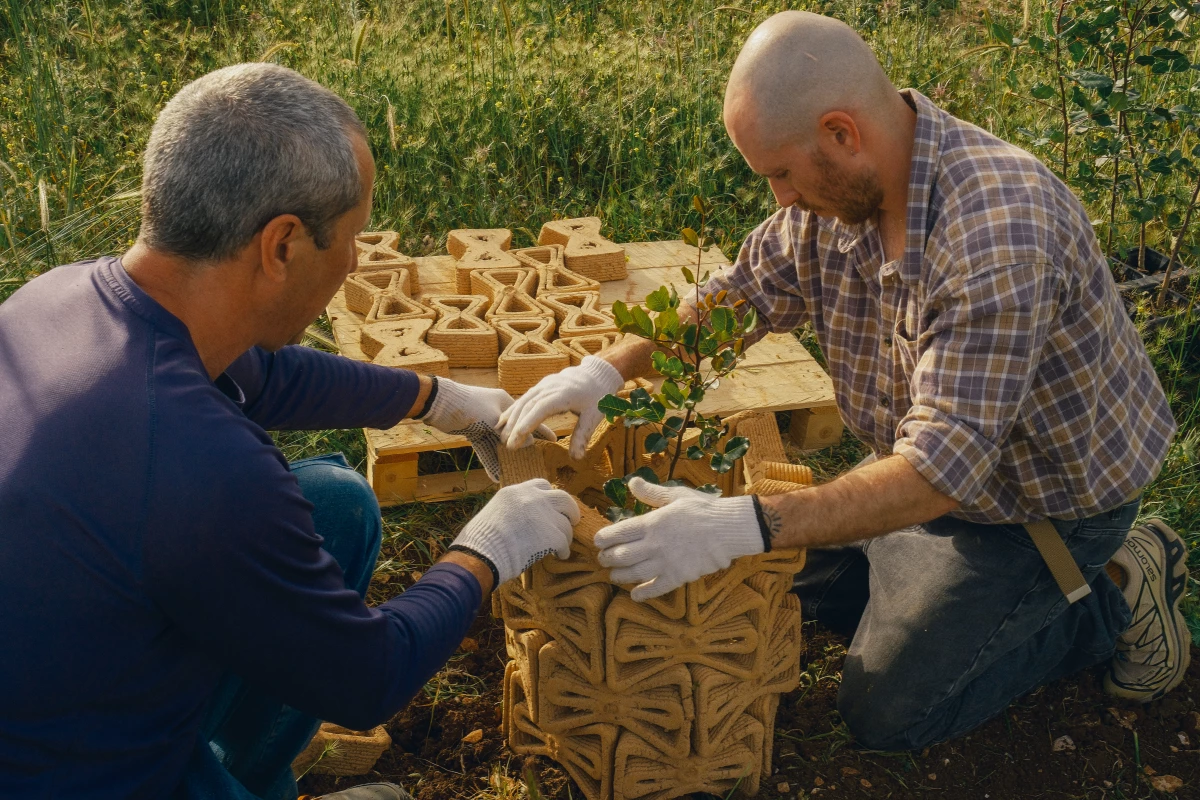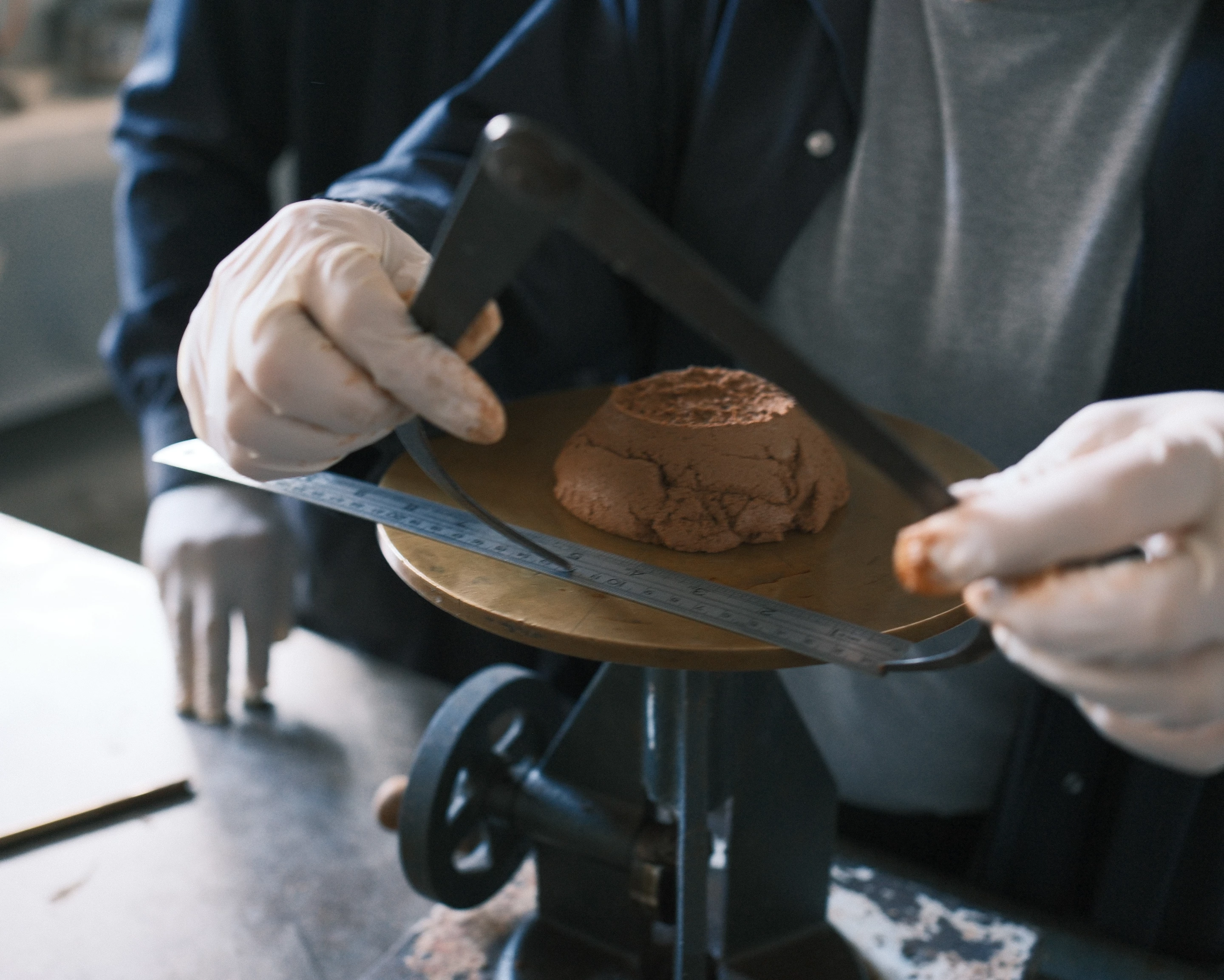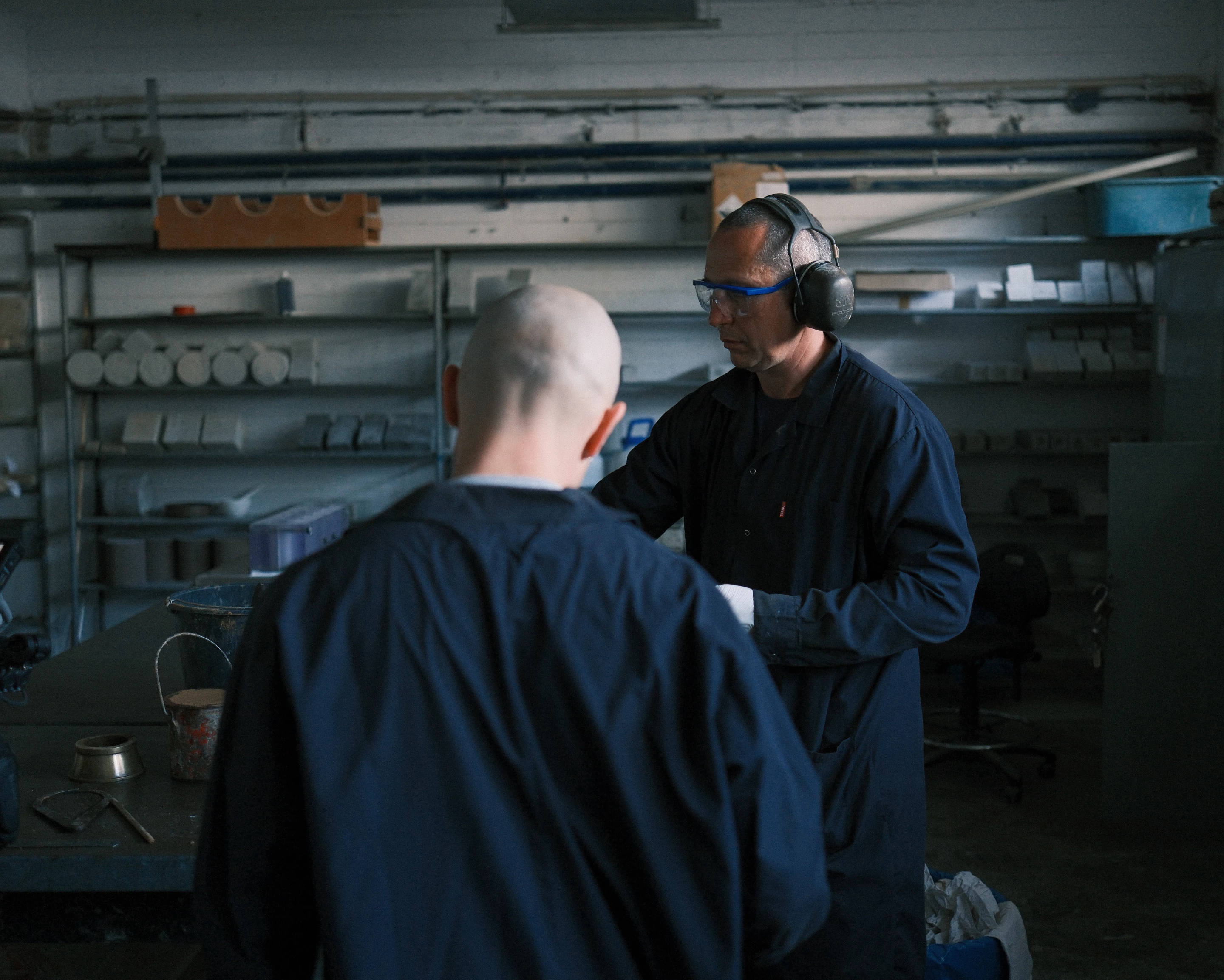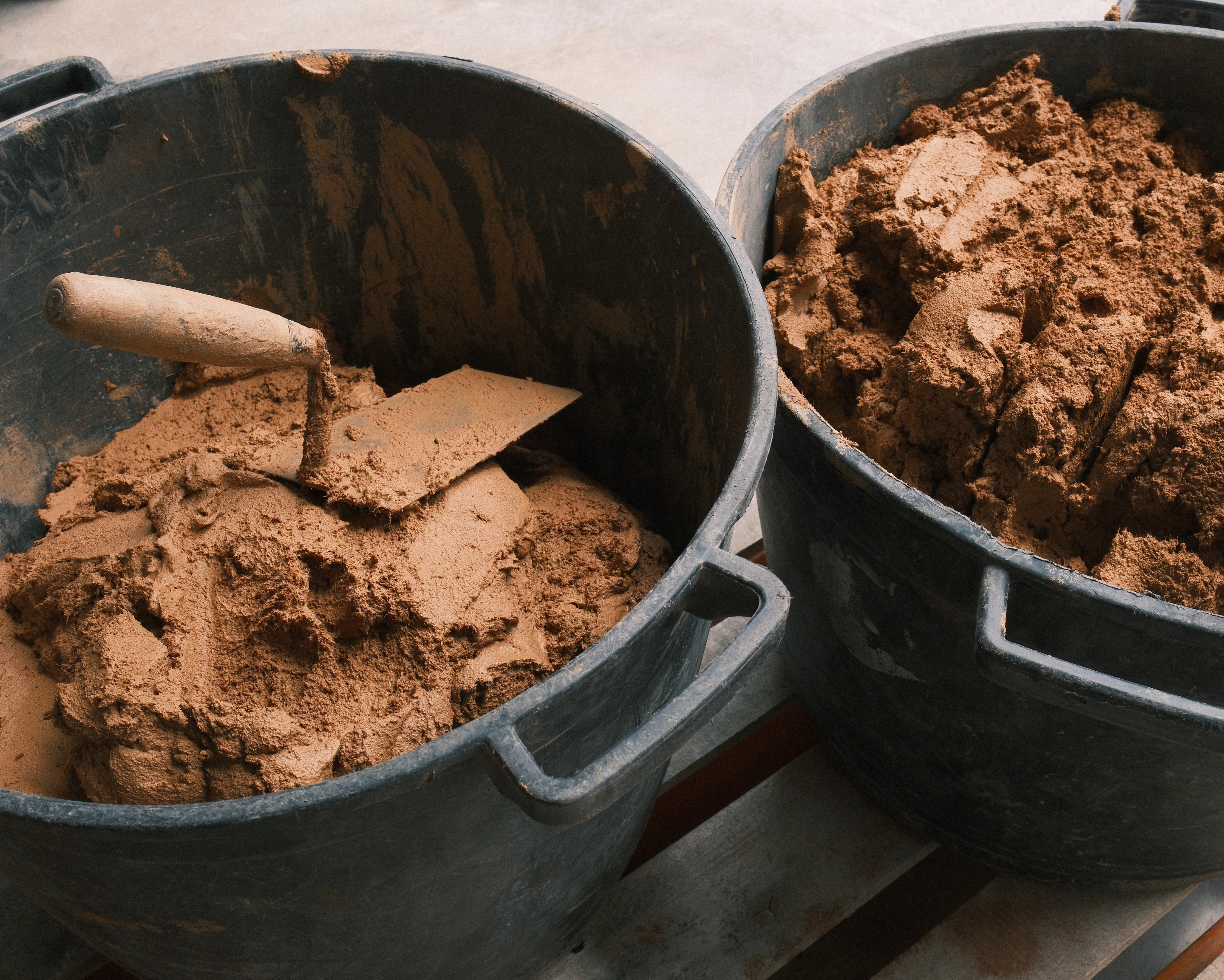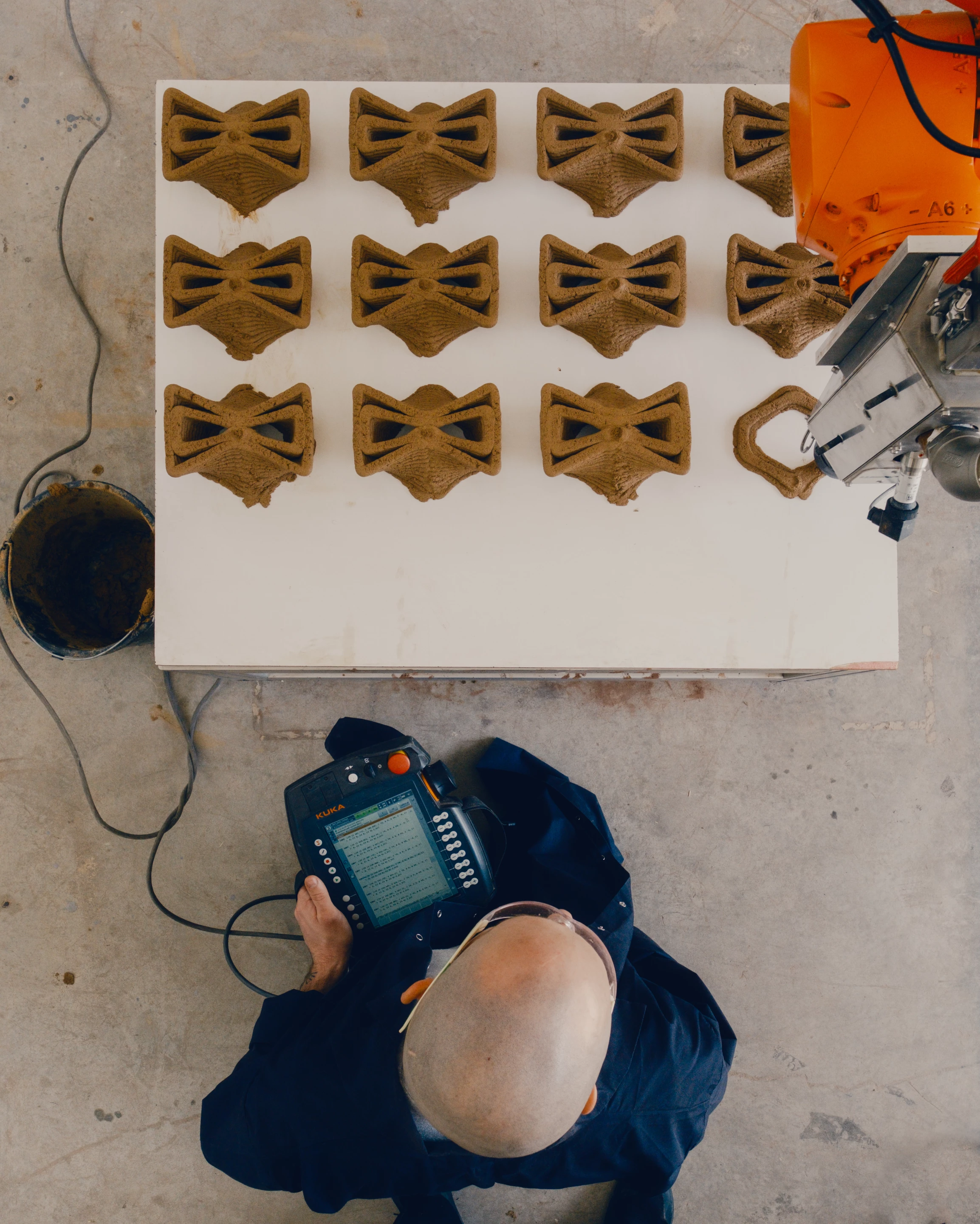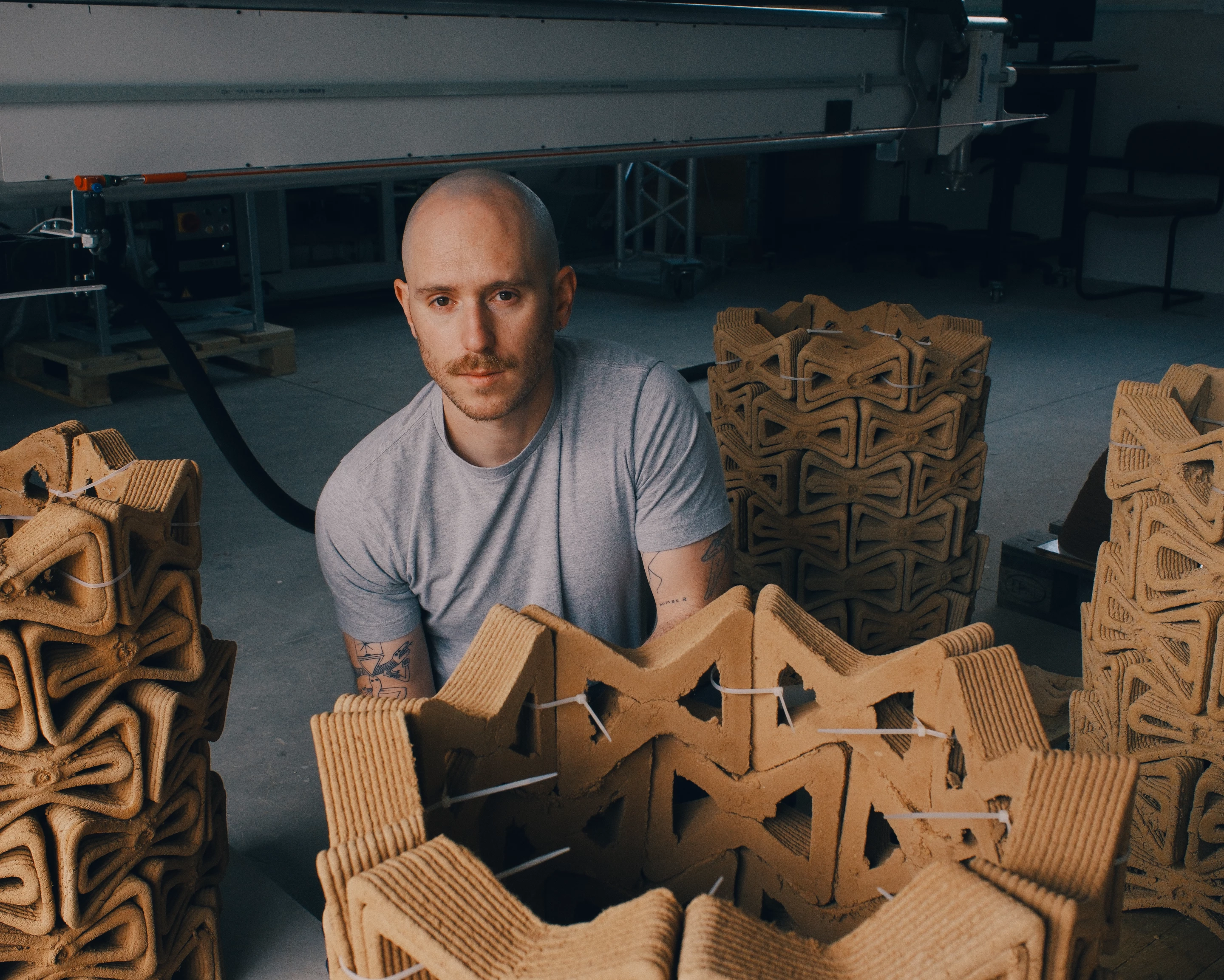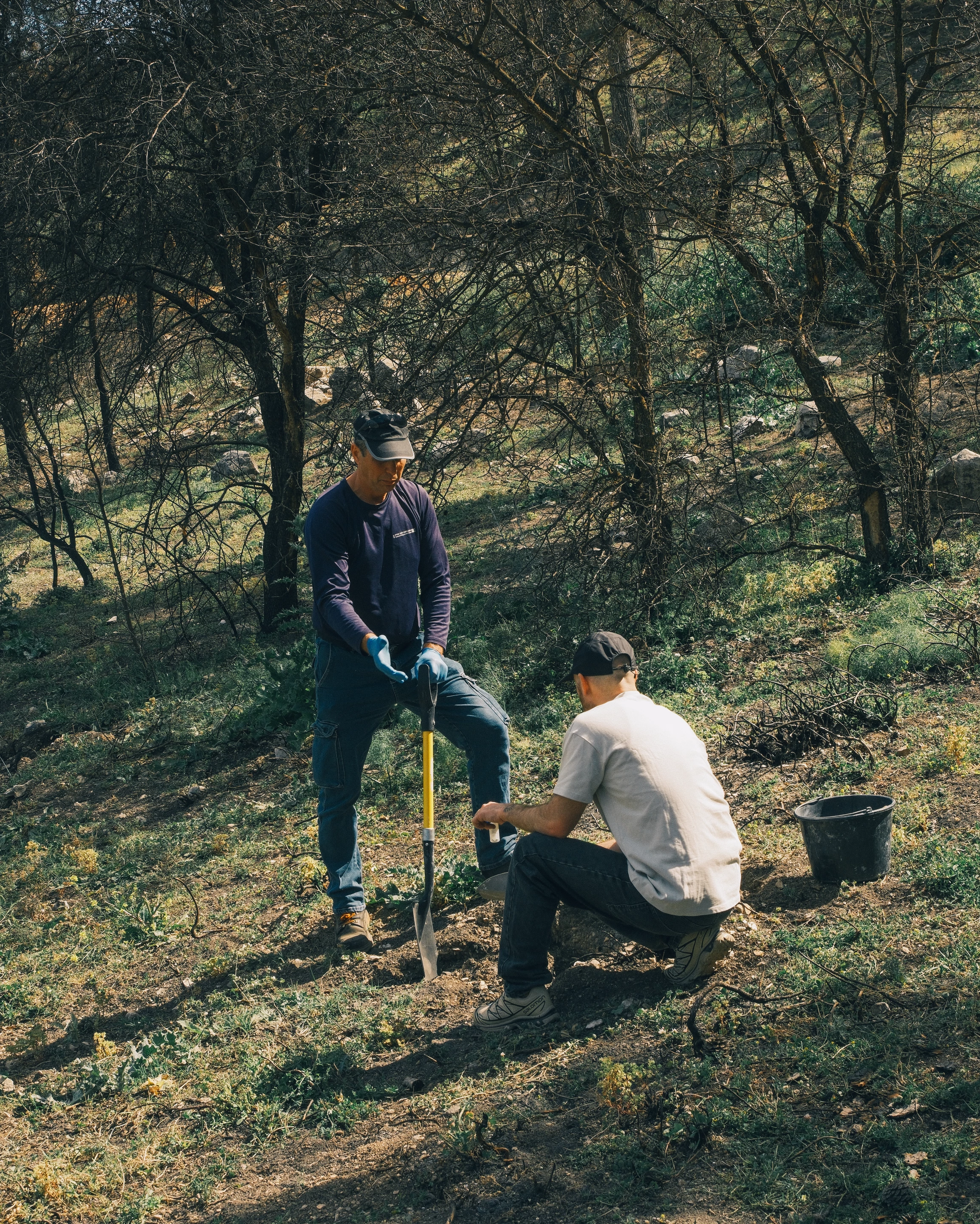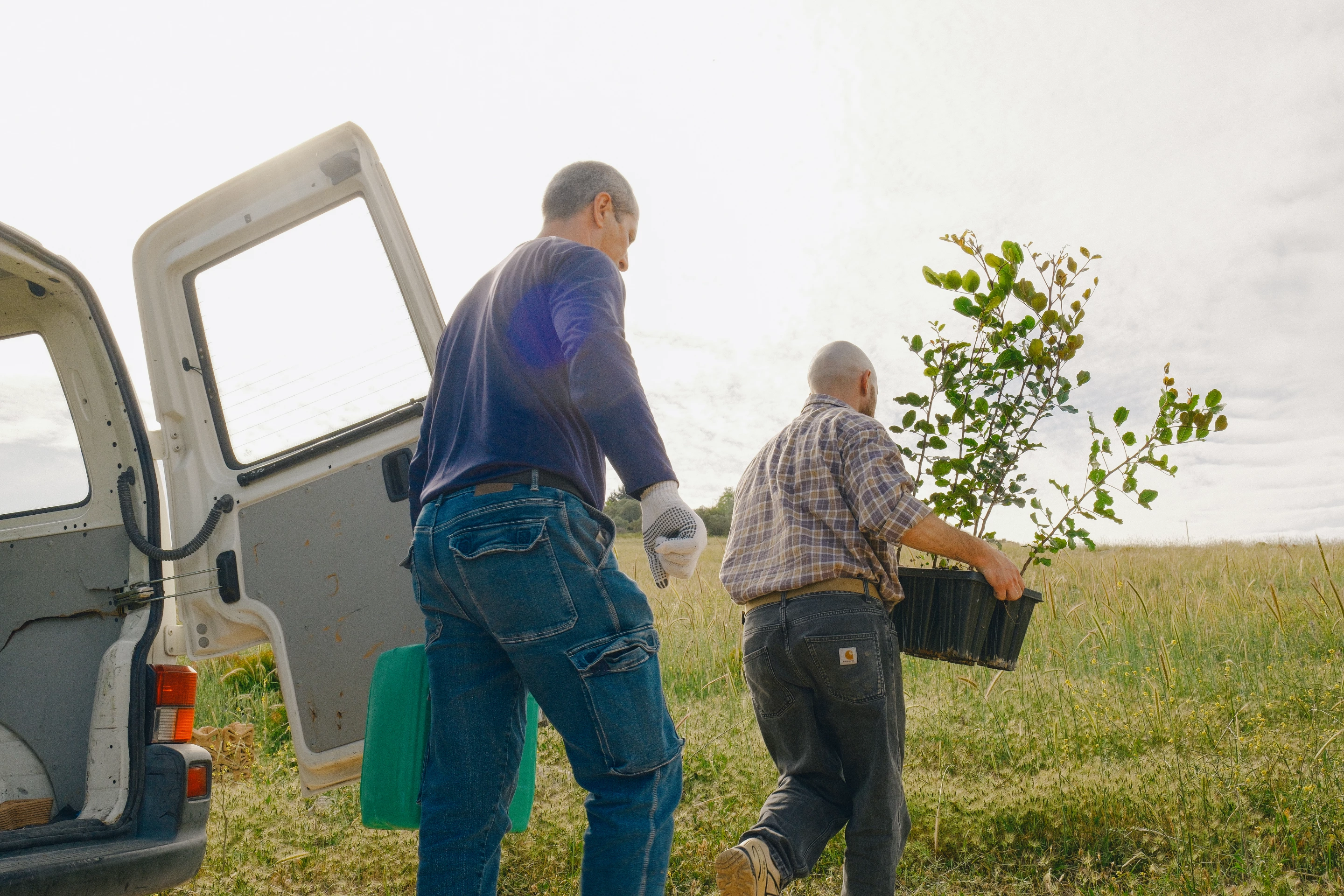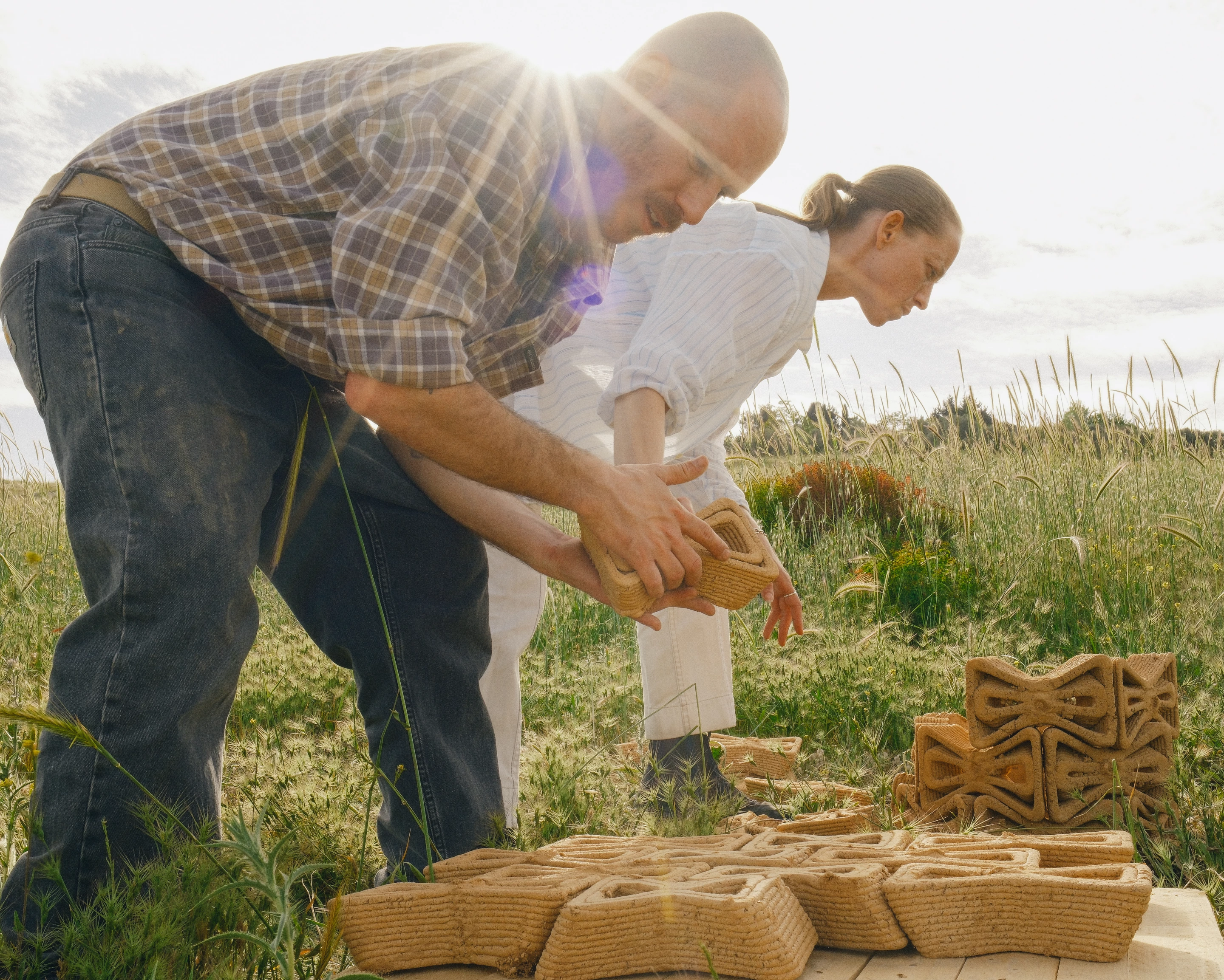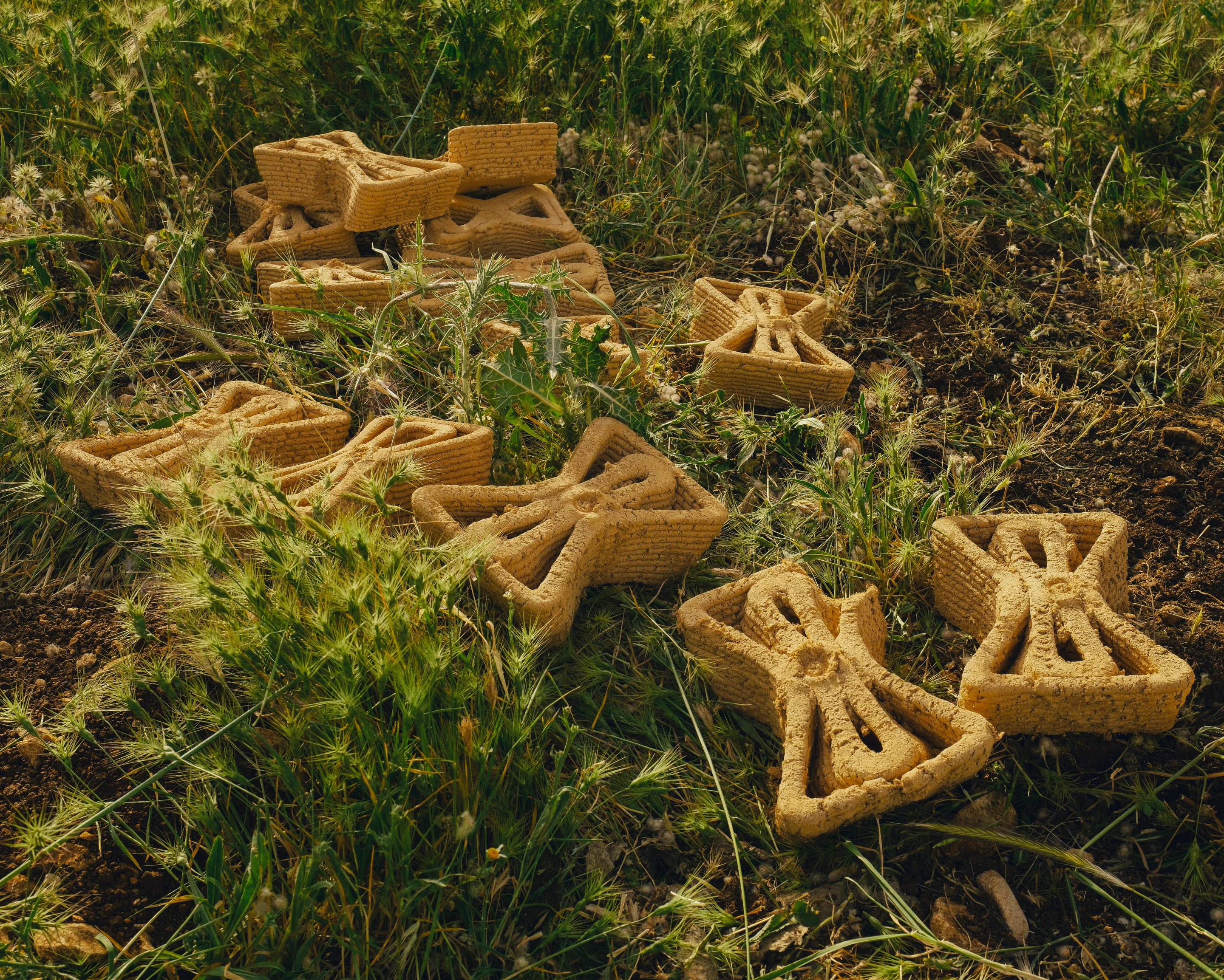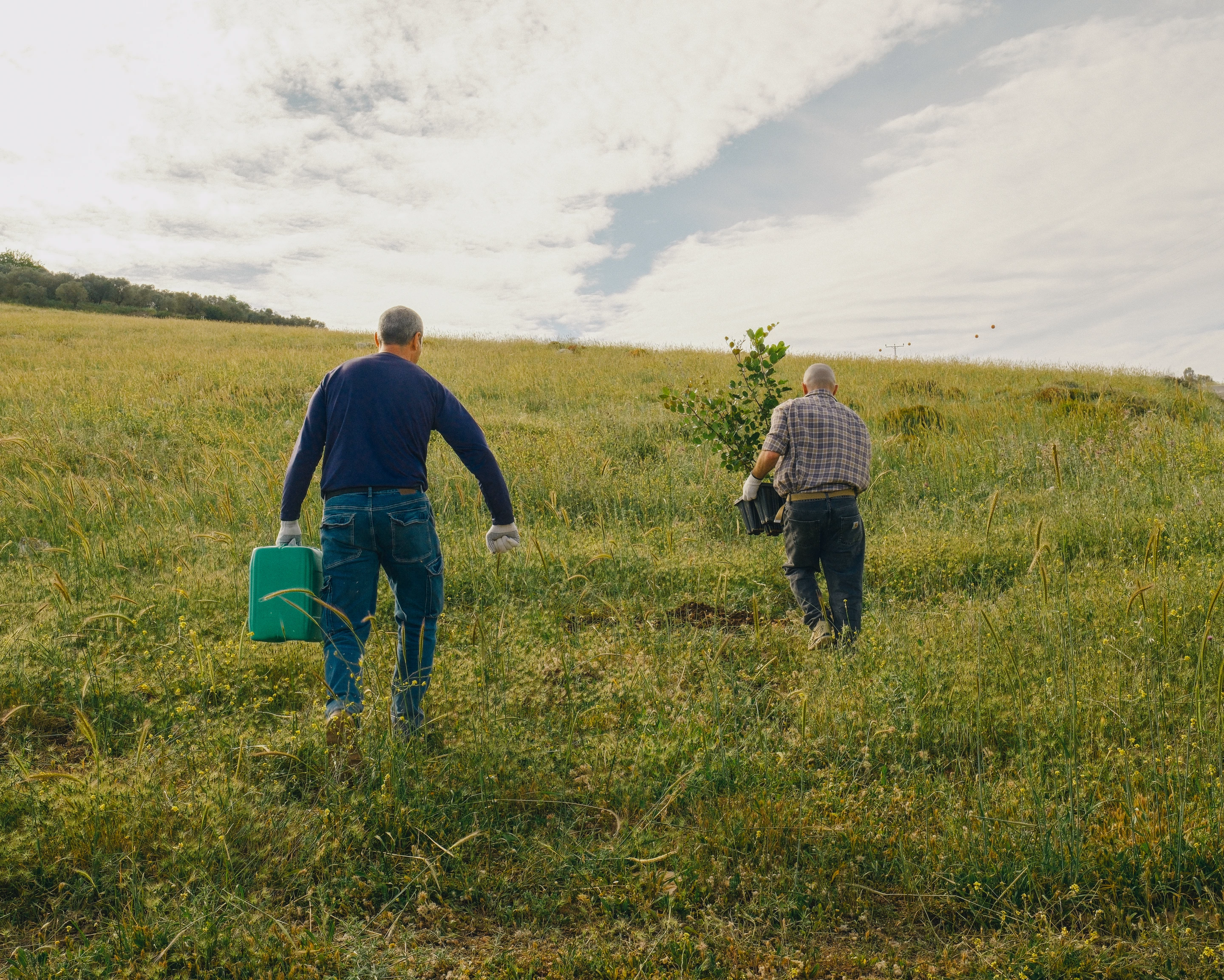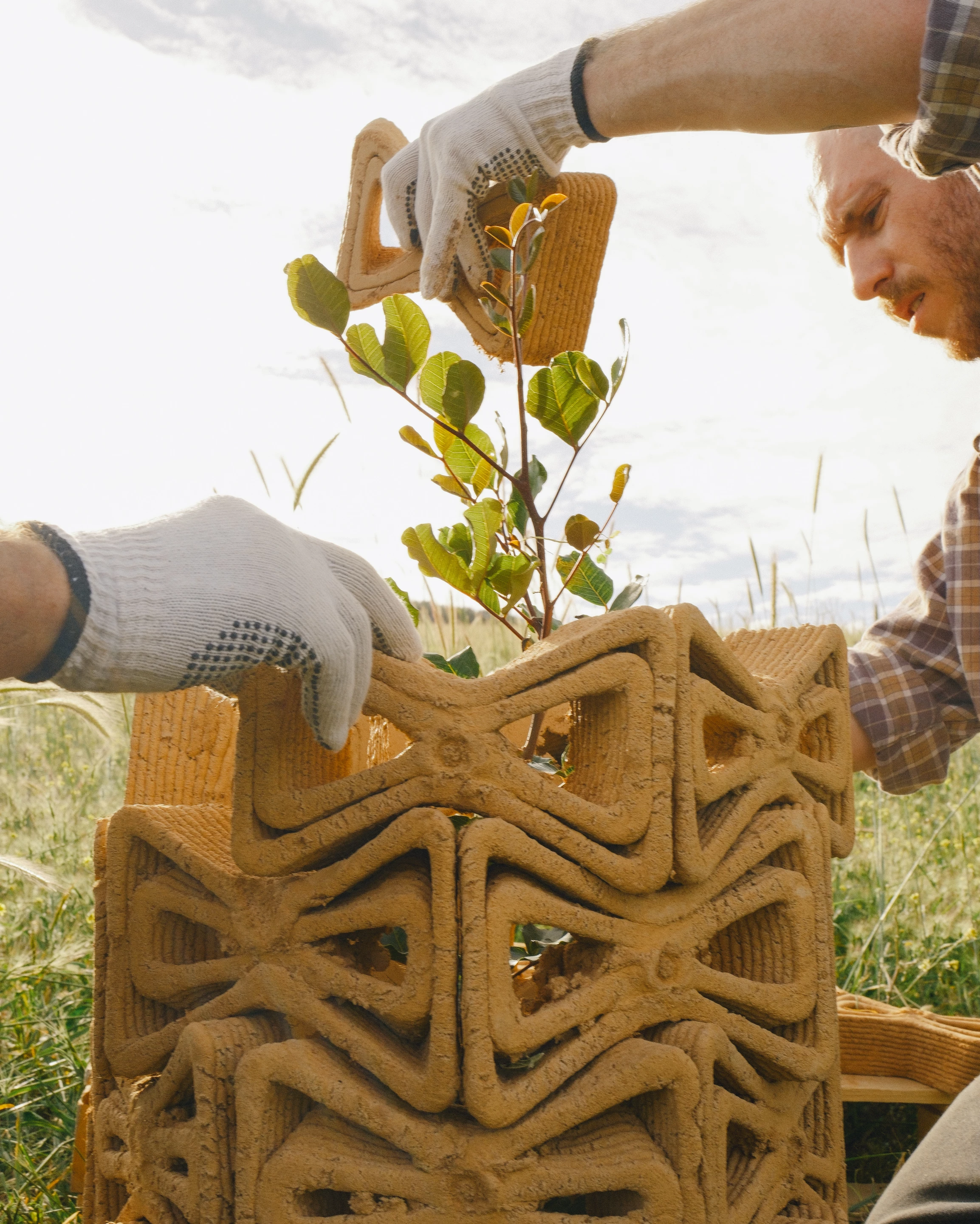Blending ancient land-shaping traditions with cutting-edge fabrication, a new project called TreeSoil is reimagining how architecture can support vulnerable environments. Conceived through a partnership between two research groups, the Technion Institute’s Material Topology Research Lab (MTRL) and the Tree Lab at the Weizmann Institute of Science in Israel, the project proposes a small but radical idea: build structures not for people, but to protect saplings struggling to survive in degraded landscapes.
TreeSoil builds on ancient land-shaping practices found in arid regions, where farmers once formed stone or earthen rings to shelter young plants from heat, wind, and rapid evaporation. The project reimagines these time-tested strategies through computational design and robotic fabrication, turning local soil into a modular, interlocking system that bridges technological precision with ecological function.
Using Italian 3D printing company WASP’s large-scale fabrication tools, the team is able to test how architectural techniques might directly support ecological regeneration. At first glance, TreeSoil looks like a sculptural cluster of interlocking earthen blocks arranged around a young tree. But the form is far from ornamental. Each prototype is shaped through robotic 3D printing and tuned to local conditions.
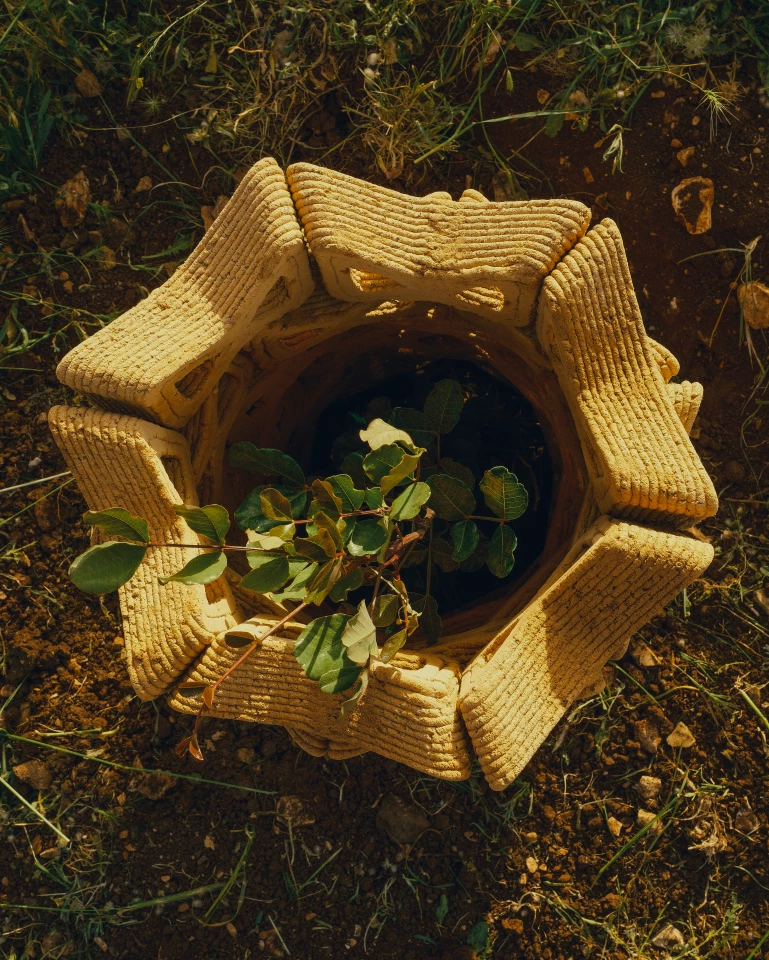
Components are fabricated using a KUKA KR50 robotic arm paired with a WASP LDM XXL extrusion system, built layer by layer, dried naturally, and later assembled on-site without adhesives. The shells are intentionally kept minimal. Fully biodegradable, each unit disintegrates as the tree matures, returning enriched material to the ground. What begins as a protective shell eventually transforms into enrichment for the landscape, fading as the tree gains strength.
“TreeSoil emerges from a unique dialogue between architecture, material science, and plant biology,” say the creators at MTRL. “This interdisciplinary framework enables the project to bridge computational design and robotic fabrication with ecological knowledge, turning each prototype into a living laboratory for environmental resilience.”
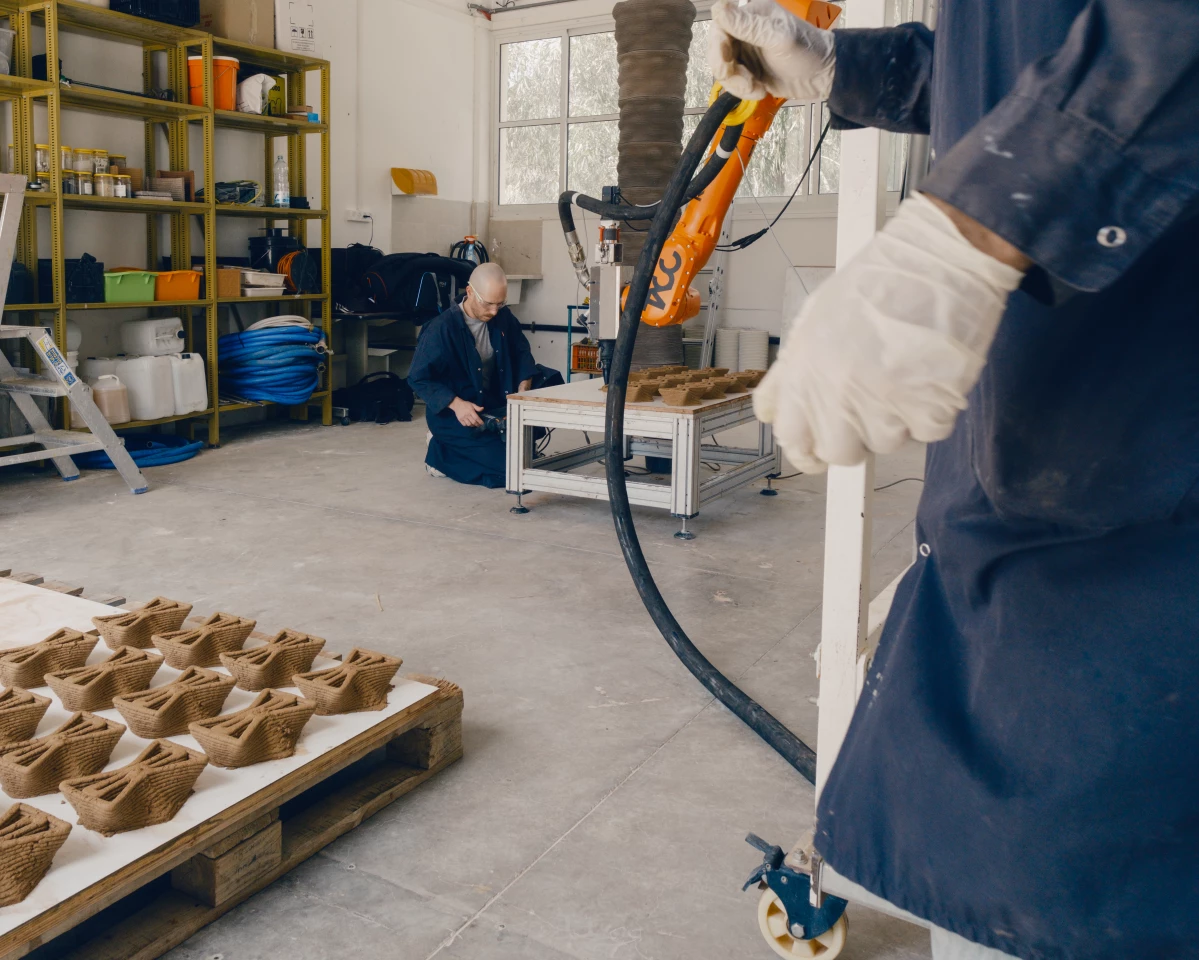
While most restoration projects rely on irrigation systems, protective fencing, or manual tending, TreeSoil takes a quieter approach. Its geometry channels airflow, moderates sunlight, and slows the evaporation of moisture, creating a sheltered pocket of climate around the seedling. The structure’s footprint is intentionally compact, allowing multiple units to be placed across a site without heavy machinery or construction waste.
Inside the sheltered core, conditions remain noticeably different from the surrounding terrain. Early tests suggest that saplings placed within TreeSoil experience a more stable microclimate, particularly in regions where intense heat or irregular rainfall lead to high mortality rates.
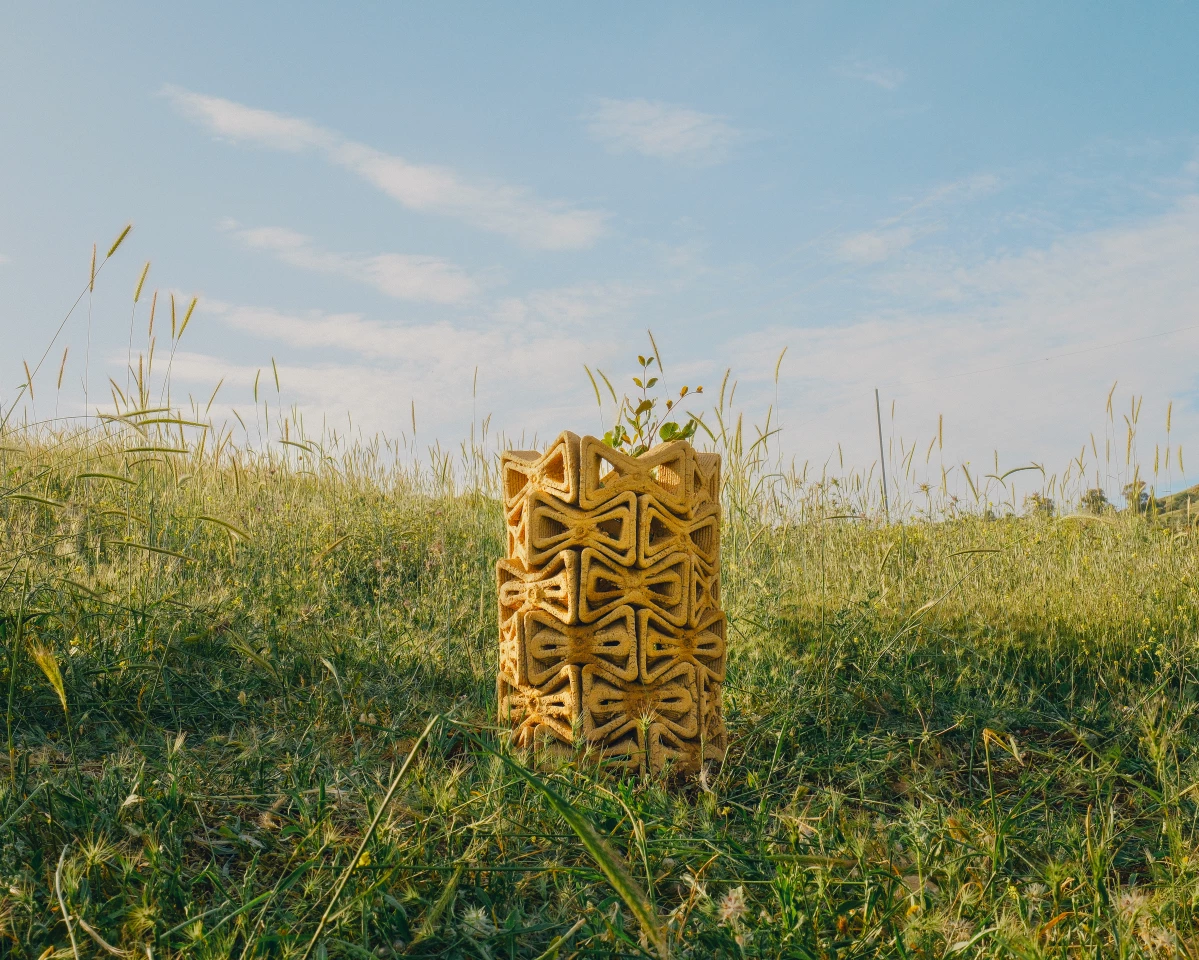
The long-term durability of the earthen blocks in extreme climates is still being studied, and the effectiveness of the nutrient-enhanced material will need to be validated across varied soil types. There is also the matter of scalability. Although robotic fabrication offers precision, deploying large numbers of TreeSoil units in remote areas could present logistical hurdles.
With thousands of plastic guards discarded worldwide each year, TreeSoil offers a compelling alternative. “More than a structure, TreeSoil proposes a new role for architecture: not as a monument of permanence or dominance, but as a practice of care, temporary, adaptive, and ecologically attuned,” says MTRL.
Expanded trials will continue through the coming seasons, with plans for broader deployment in community forestry and ecological restoration projects.
Source: MTRL
